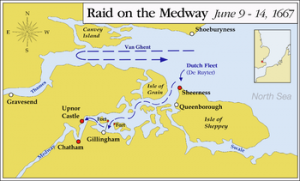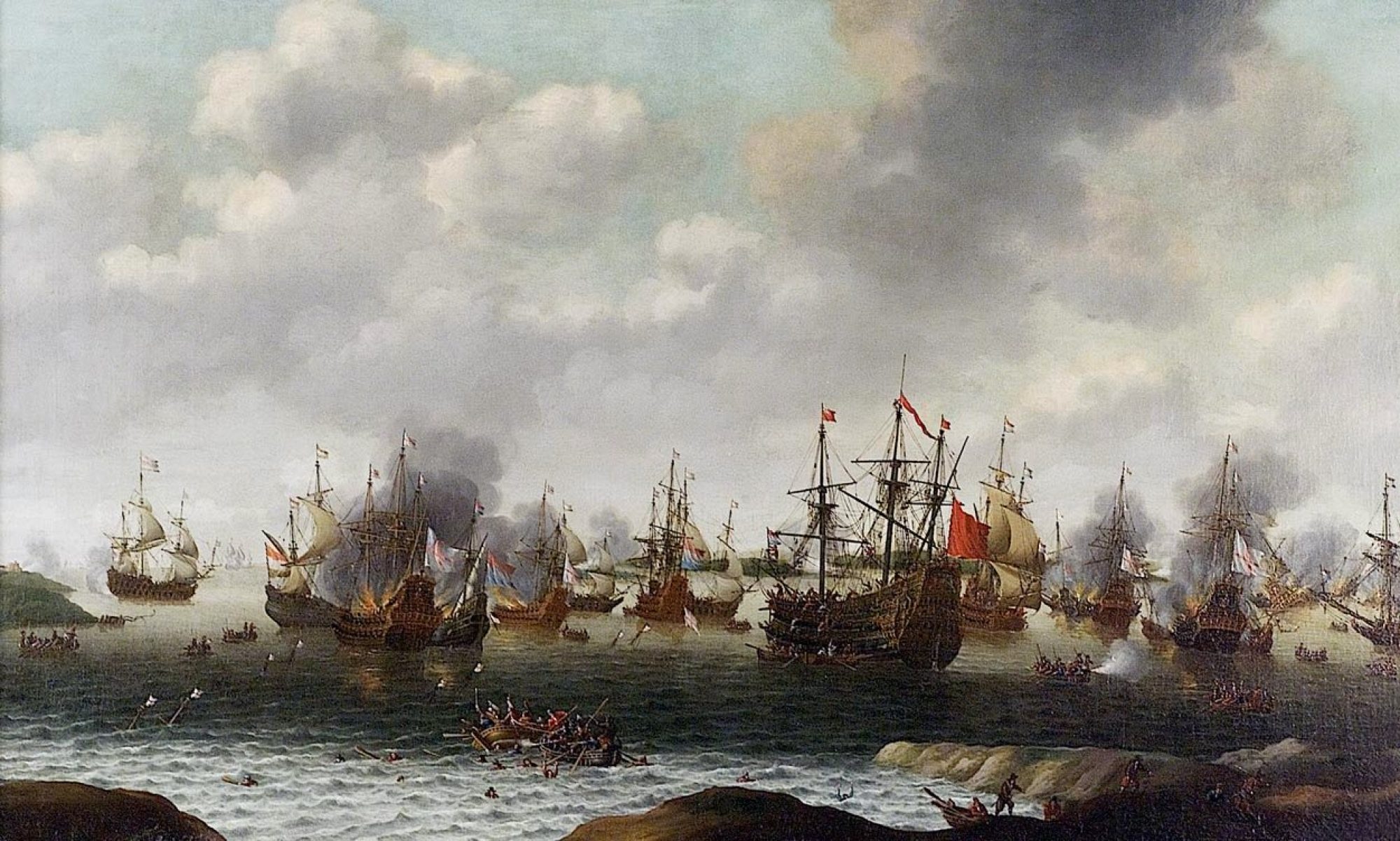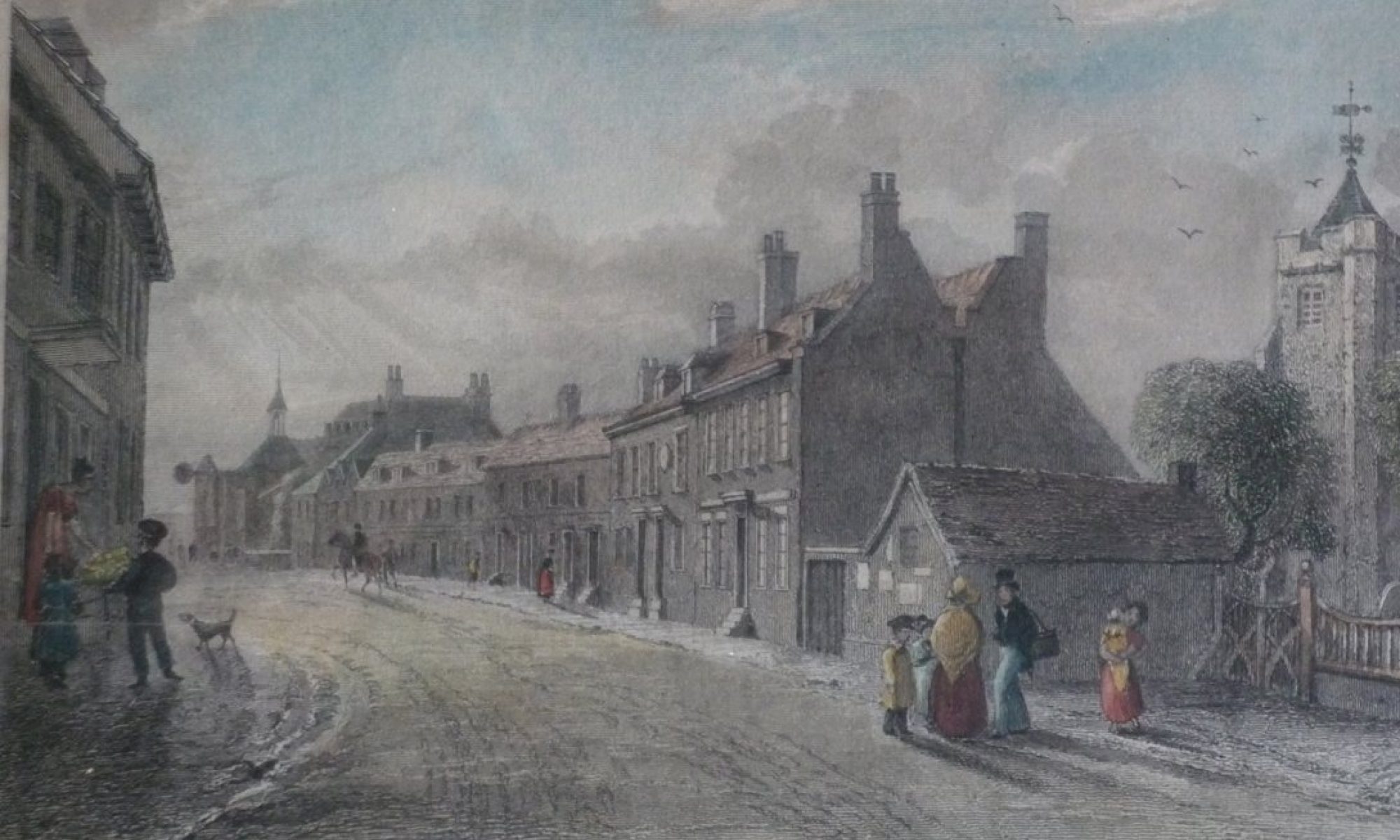The second Anglo Dutch war had progressed well for England, and in 1666 they repulsed a Dutch invasion attempt consisting of 6000 troops in transports escorted by 75 warships.
After this the English defeated the Dutch and blockaded their ports. It was assumed in England that peace talks would end the war as the English were now masters of the sea.
Over confidence coupled with the financial problems of Charles II led to the Royal Navy laying up substantial numbers of ships and undermining its hard won naval supremacy.
The Dutch, learning of this, decided to launch another fleet, in 1667, to strike the English off guard in order to get better terms in the peace treaty. This is known as the raid on the Medway.

On June 10 Dutch commander,Van Ghent, took the Isle of Sheppey and its fort at Queenborough.
Legend has it that the Mayor of Queenborough crossed the mud to them waving a white flag, the surrender was to prevent any blood-shed in his town. The Dutch were under strict orders not to indulge in any looting or destruction so left the town intact but defending troops destroyed the town, they looted houses and destroyed private property before running in fear of the enemy.
As a result of the surrender the Dutch flew their flag from the Guildhall, making Queenborough the only town in England to fly an invaders flag since the time of William of Normandy.
They then moved toward the fortress of Sheerness. Here they took or destroyed stores to the value of 4 tons of gold. The fleet then headed to Chatham.
During this period the Dutch caused much damage to the English fleet, partly because Charles had not paid his men in the navy and they refused to carry out orders which might have prevented the Dutch fleet moving up the river Thames. Although the Dutch were not successful in landing further up river, they did sail in the Thames and Medway at will, causing extreme embarrassment to the English.
After 10 days the Dutch left the Thames and Medway as they had no orders to land. They continued to blockade the Thames estuary until the Treaty of Breda was signed in August, when the Dutch fleet sailed triumphantly back to Helvoetsluis.

